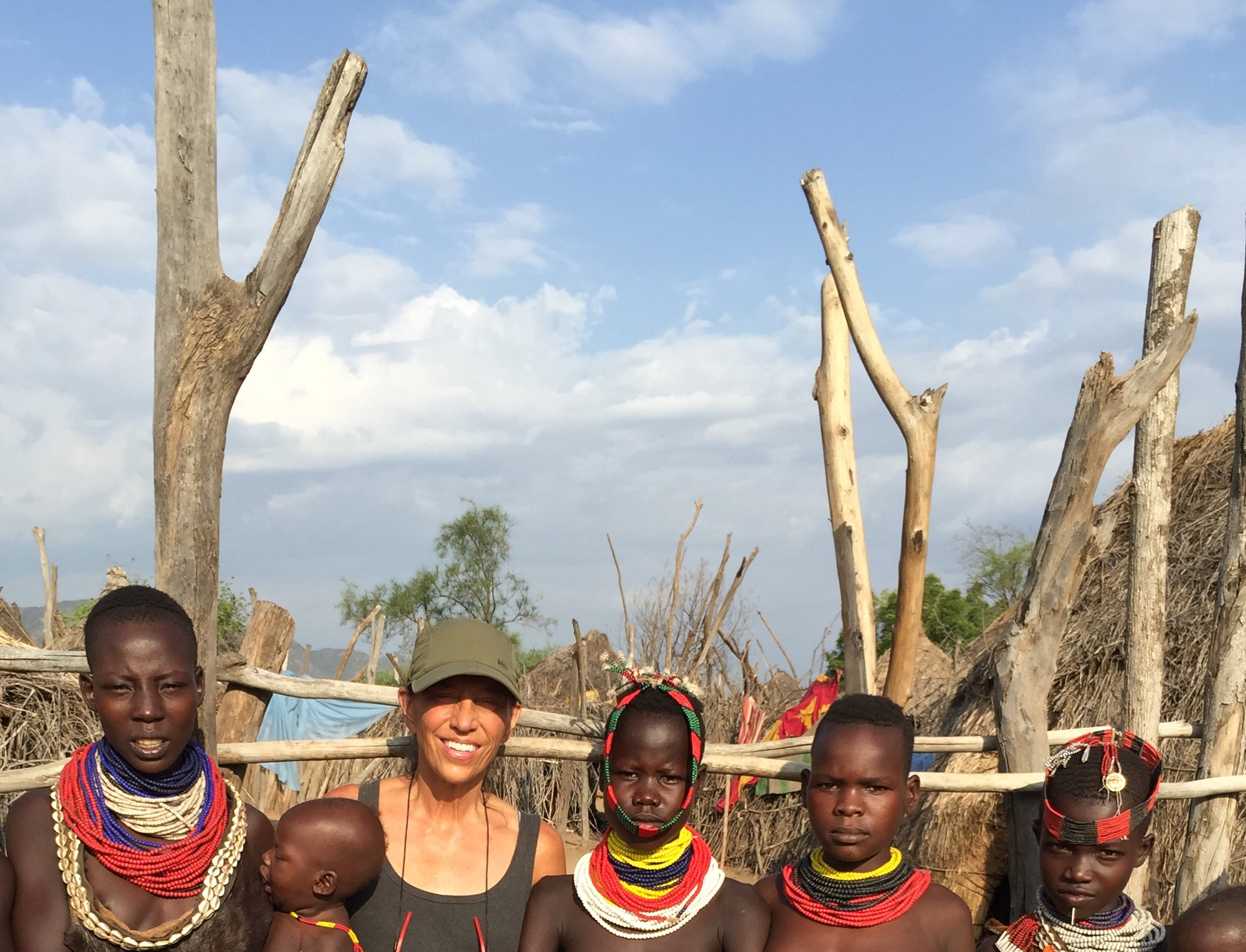Defining Beauty

From Idaho to Omo — that’s how far Christine Corbin went to help her students redefine beauty and identity.
An art teacher at Boise‘s Riverstone International School, Christine was researching ideas for a portrait-painting unit when she found photographs of the Omo River Valley tribe in Ethiopia. She immediately wanted her students to paint these “hauntingly beautiful” people, so began with the inquiry question, “What is beauty?”
“My students went bonkers,” said Christine. “Who are these people? What is their concept of beauty? And how is their view different from ours? were just a few of the questions I took with me to Ethiopia last summer on my Fund for Teachers fellowship.”
For four weeks, this sixty-something-year-old traveled alone in Africa with a dishonest guide, lived in areas of extreme poverty and traversed remote areas experiencing conflict between the government and various tribes. These conditions paled in comparison to the learning, however. “I was able to immerse myself completely in the beauty of the unknown and be amazed at what it taught me,” she said.



She’s now teaching her students about the art, customs and culture of the people with whom she fell in love. Eighth graders completed a photography unit based on her research, which included replicating versions of the images Christine brought back from her fellowship. She spent time with the Karo tribal people, whose face and body painting became the inspiration for students’ photo shoot assignments. The finished products (i.e. faces) appear in books they produced using Shutterfly. After a cross-curricular mask-making unit in conjunction with the music teacher this spring, her students will exhibit their art in a school-wide event at the local community center.


Christine’s students shared their take aways from the unit on beauty:
“Beauty is pure, simple, and happy. The Omo Valley tribes gauge their lips and ears and scar their bodies to be beautiful. It is pure and beautiful to them. We used our photography to portray our emotions and the emotions of the tribes. Beauty is different for everyone.” -Alease
“My concept of beauty is a person who is confident and wise,” added Soloriana, another student. “I believe that cultures everywhere continue to redefine their definition of beauty. Beauty changes from culture to culture.” -Soloriana
“It’s important to understand others’ ideas of beauty. The Omo River Valley people use their painted bodies, scarification, lip and ear gauging to express themselves and their ideas of what is beautiful to them. People aren’t typically used to those types of things as something beautiful. It is important to understand what other cultures think is beautiful.” -Aiden
“They saw beauty in showing how tough they were and in their ability to endure pain. Using photography, I expressed my concept of beauty as seen by the Omo River Valley tribes. We got to create our own headpieces and used paint, flowers, scarves, jewelry, and makeup to express ourselves in different ways. We used angle, lighting, and special effects to create a story. A face can tell a story.” – Salma
An unintended outcome of the art study was learning about the Gibe III Dam and it’s potentially devastating impact on the Omo River Valley tribe. Her students are now brainstorming on how they can help save the people with whom they also fell in love.
“My personal and professional perspective has profoundly changed,” said Christina. “My research drove home the fact that, as an educator, I have the power to be the catalyst for change. Everything I say and do in my classroom must motivate my students to be original thinkers to impact our interconnected world, especially the marginalized and disenfranchised who have no voice or power.”
 Back to Blogs
Back to Blogs